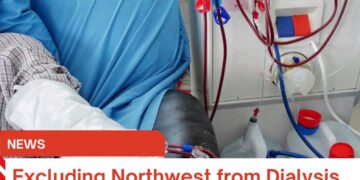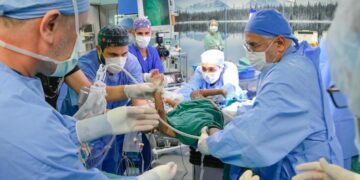Nigeria, a country with an estimated population of over 200 million citizens and the birth of nearly 13% of the global total of sickle-cell, a summary of an estimated 100,00–150,000 newborns with sickle-cell, has built a mechanism for combating the life-threatening multisystem disorder by unveiling a developed drug for sickle cell and hypertension.
This was disclosed by the country’s minister for science and technology, Olorunnimbe Mamora, on Tuesday, May 17, at the presidential villa in Abuja while addressing journalists on the development and the ministry’s achievements as a new government is set to take over the country’s leadership on May 29.
According to the minister, “We are aware the country has a significant number of patients and careers battling with sickle cell, which is a multisystem disorder; we have been focused on bringing a solution to the anaemia, which we develop products from plants that combat or are anti-sickening in nature and are capable of reducing the rate at which patients battling with sickle-cell anaemia are suffering from”.
Also, we develop anti-hypertensive drugs and Lovastatin, which can be cholesterol as a drug for patients battling with hypertension. Mamora disclosed
This was achieved by our dedication and effort through our molecular diagnostic laboratories, as we have built a mechanism for data collection that enables us to identify or make a diagnosis. “We understand that the primary goal of managing patients is to make the right diagnosis because when you fail to make the right diagnosis, you can’t table down a solution, he said.
However, for food security in the country, we have also secured food processing and equipment fabrication to strengthen food production across the country.
On receiving the news that Nigeria develops drug for sickle cell disease and hypertension, many Nigerians reacted positively with the hope of solutions to the anaemia; hence, sickle cell disease (SCD), with a global figure of approximately 50 million individuals suffering worldwide, ranks Nigeria, which has 4-6 million people living with it, as the epicenter zone with a significant number. The disease is a blood disorder and has been characterized by the presence of damaged haemoglobin, which hinders its ability to effectively transport oxygen to the body’s tissues.
LIKE & FOLLOW US ON FACEBOOK, TWITTER, INSTAGRAM, LINKEDIN & YOUTUBE



































